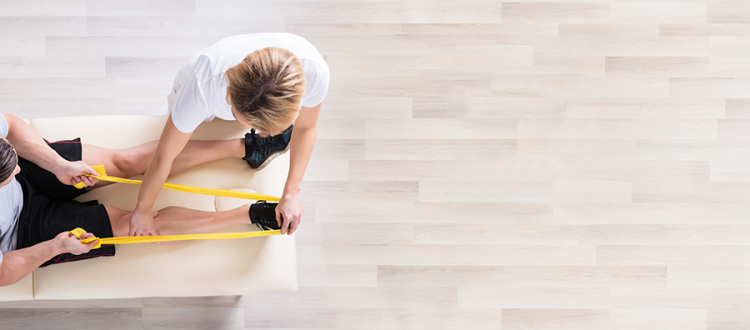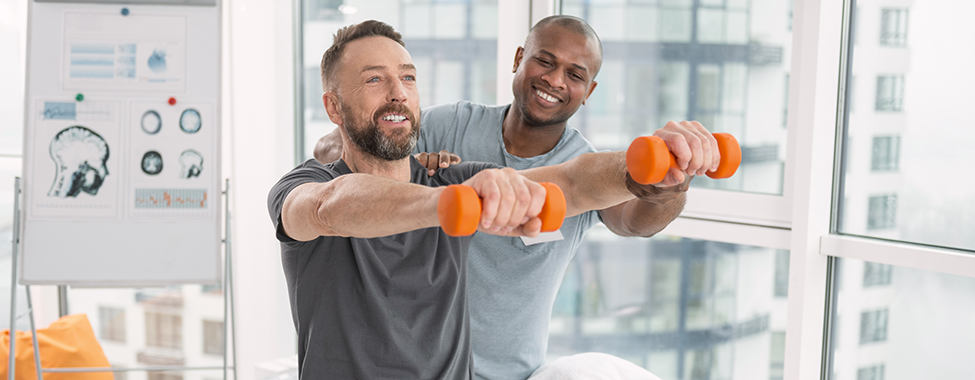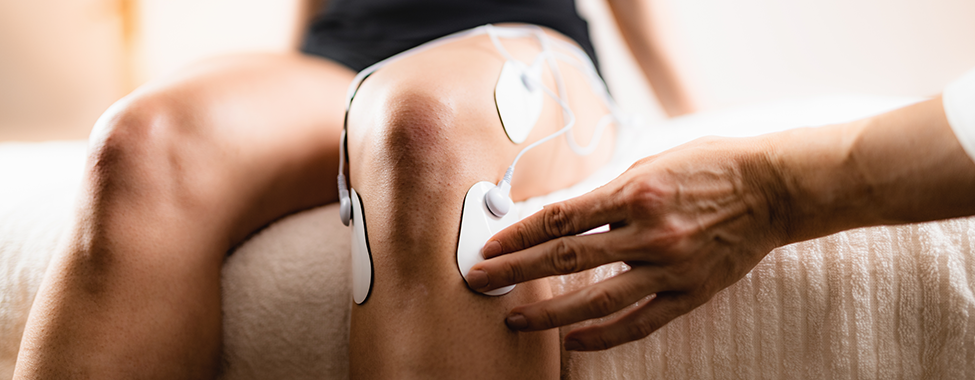- 24 Dec, 2020
- /
- Clearlight Infrared Saunas
- /
- No Comments
What is Physiotherapy? The Importance of Physical Therapy
Physiotherapy, also known as physical therapy, is in the same vein as sauna use for helping with body ailments by applying external elements to help the body heal. Being aware of your body and how it works is important for long-term health, and physiotherapy can be the perfect practice for both injury recovery and prevention. Read more to learn more about physiotherapy techniques and how it can benefit your overall health.

What is Physiotherapy?
Physiotherapy takes a ‘whole person’ approach to health and wellbeing, which includes addressing general lifestyle and encouraging participation from the patient. This practice helps restore movement and function when someone is affected by injury, illness or disability. It can also help reduce your risk of injury or illness in the future. Physiotherapy helps improve a range of conditions associated with different systems of the body, such as:
- Neurological: stroke, multiple sclerosis, Parkinson’s
- Neuromusculoskeletal: back pain, whiplash associated disorder, sports injuries, arthritis
- Cardiovascular: chronic heart disease, rehabilitation after heart attack
- Respiratory: asthma, chronic obstructive pulmonary disease, cystic fibrosis
Physiotherapists consider the body as a whole, rather than just focusing on the individual aspects of an injury or illness. Some of the main approaches used by physiotherapists include:
- Lifestyle Education: General advice about things that can affect your daily lives, such as posture and correct lifting or carrying techniques to help prevent injuries
- Movement, Tailored Exercise, and Physical Activity: Exercises recommended to improve your general health and mobility, and to strengthen specific parts of your body
- Manual Therapy: Use of hands to help relieve pain and stiffness, and to encourage better movement of the body
- Electrotherapy Techniques: Incorporating Transcutaneous Electrical Nerve Stimulation (TENS), laser therapy, diathermy, and ultrasound technology to help treat pain

Physiotherapy vs. Physical Therapy: Are They the Same?
On a basic level: Yes, they are the same.
On a more technical level: While both physiotherapy and physical therapy have the same goals, the terminology slightly differs. Physiotherapy involves a hands-on approach and makes skilled use of manual therapy such as stretching, joint mobilization, soft tissue release, etc. Physical therapy, on the other hand, adopts a more exercise-based approach for strengthening muscles, improving balance, etc.
The methods used to deal with pain are more varied in physiotherapy, including manual therapy and electrotherapy treatment techniques such as TENS (Transcutaneous Electrical Nerve Stimulation). A physical therapist would not commonly use the TENS method.
Regardless of the slight differences noted above, physiotherapy and physical therapy are essentially the same practice and are often used interchangeably.
The Importance of Physical Therapy
A physiotherapist’s purpose is to improve a person’s quality of life by using a variety of treatments to alleviate pain and restore function or, in the case of permanent injury or disease, to lessen the effects of any dysfunction. At the core of physiotherapy is the patient’s involvement in their own care, through education, awareness, empowerment and participation in their treatment.

Different Physiotherapy Techniques
Though the main approaches to physiotherapy were mentioned above, there are a number of other techniques that may sometimes be used during treatment. While the combination is not the same for everyone, these are the most common techniques that are used.
Massage
Massage is the manipulation of soft tissue through the use of hands. Massage can improve blood flow, reduce pain, and increase mobility. Massage can also help reduce any tension that you might have been holding onto and reduce your pain perception as well.
Taping
Your physiotherapist might use taping or strapping to immobilise certain joints. This can take tension off of strained areas and allow for better healing.
Icing
While you might be thinking that you can ice at home, many physiotherapy visits end by icing the area that was worked on. This is to help reduce any inflammation that might have come up during your visit. You normally should ice an injured area for 15 minutes, but when your physiotherapist is doing it in-office, you need to follow the time that is determined by the therapist.
Joint Mobilization or Manipulation
Joint mobilization increases the range of motions of joints and can dramatically help improve a patient’s life. This technique is done by focusing on a normal range of pain-free movement.
Stretching
Stretching during physiotherapy can mean a few different things. To begin with, stretching can help release any muscles that might be locked up. It will also increase your range of motion and allow you to stay more physically active for much longer. Allowing your muscles to lengthen will make them move better, reducing the risk of injury.
Neurodynamics
Some pain or injury is caused from a muscle putting too much pressure on a nerve, either due to injury or inflammation. Neurodynamics can help identify the source of the nerve compression and alleviate the pain.
Ultrasound
Ultrasound is another technique that is often used to help with physiotherapy treatment. Ultrasound provides a deep heating effect directly into muscles and soft tissues. Heating injured areas up improves circulation and can promote good healing.

How to Enhance Physiotherapy at Home
Incorporate Infrared Sauna Use
With the approval of your therapist, infrared sauna use and physiotherapy go hand-in-hand. For parts of the body that are experiencing muscle inflammation and swollen muscle tissue, saunas can help reduce inflammation. Studies also show that repeated use of saunas can have a positive effect on chronic pain, and it can also help alleviate joint pain and arthritis. By reducing this pain, your physiotherapy treatment may become easier to navigate. Sauna use can help your body feel better, making it a proactive measure in reducing risks of several diseases and preventing future injury.
Be Open with Your Physiotherapist
Your physiotherapist’s job is to provide you with the guidance to recover, which they cannot properly do if there isn’t an open line of communication. Check in with your therapist often and report back on what things are and are not working during your treatment. Ask questions if you have any, especially when it comes to perfecting techniques – one wrong move can unfortunately set back your progress. Set goals and milestones with your physiotherapist to make sure you are on track and know what to expect.
Do Your Daily Exercises and Stretches
Perhaps the most important way to ensure your physical therapy is working is by practicing your stretches and exercises at home. Your physical therapist likely assigned you different movements to help in your rehabilitation, and it’s crucial to follow them. This helps you learn proper techniques and become more aware of your treatment. Think of it like homework – you can learn so much in the classroom, but the homework and studying at home is what really helps you ace your test.
We believe in taking the ‘whole person’ approach. Taking the physiotherapy approach can be a huge benefit to your overall health. Whether recovering from an injury or learning lifestyle changes, these techniques will bring you lasting effects. If the above sounds like something that can benefit your life, speak with your doctor for next steps.
 Canada
Canada Australia
Australia New Zealand
New Zealand Germany
Germany UK
UK EU
EU Ireland
Ireland Malaysia
Malaysia China
China Japan
Japan


